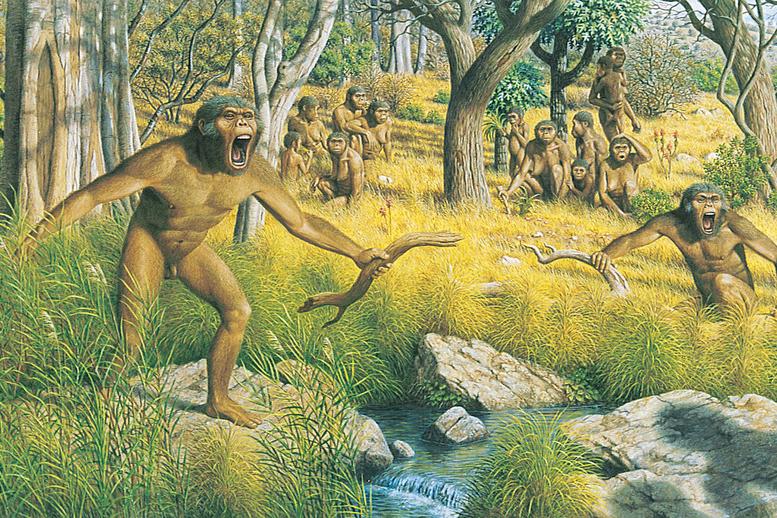Ancient footprints in Crete challenge theory of human evolution – but what actually made them?
Experts are intrigued by footprints made 5.7 million years ago but argue we cannot yet know for sure whether they come from a human ancestor. As it stands, they may have been from a gorilla

Researchers have discovered some 50 footprints at Trachilos in Crete that are nearly six million years old. It looks like they may be from a hominin – a member of the human species after separation from the chimpanzee lineage. But, as the authors point out themselves, the findings are highly controversial – suggesting human ancestors may have existed in Crete at the same time as they evolved in Africa.
So what should we make of it all? If the footprints are confirmed to be from a hominin – additional studies are needed before we can know for sure – it is unquestionably exciting.
The oldest footprints confirmed as hominin are the Laetoli series, which date to 3.65 million years. The Laetoli series, found in Laetoli, Tanzania, are now known to have been made by the early human ancestor Australopithecus. It was up to six feet tall and had a foot function pretty much indistinguishable from our own.
The candidates
So what kind of two-legged creatures have roamed Europe or nearby countries? We have abundant fossil evidence of great apes in Europe at the time of the Trachilos footprints, but no confirmed cases of hominins. Apes go as far back as 13m years ago, such as Pierolapithecus from Barcelona. Two million years later, the pongine or orangutan relative Hispanopithecus lived in the same region. Excellent skeletons of both indicate they were probably partially walking upright.
The ape Dryopithecus and the possible hominin Graecopithecus from Greece were also around. The latter is about seven million years old, but unfortunately no skeleton has been found except for skull and teeth. Slightly older at about nine million years old are the very complete postcranial skeletons of Oreopithecus from Italy, which was unquestionably walking on two legs – and probably in trees as well as on ground. We don’t know for sure, but it might also be a hominin.
In Kenya, there was Orrorin, also slightly older than Trachilos. It lived in trees but walked on two legs, completely upright. Orrorin was quite likely a hominin or a very close relative of the common ancestor of chimpanzees and humans, although human-like in all ways. Importantly though, we unfortunately lack evidence of the feet, so we cannot compare it with the Trachilos footprints.
Slightly younger than the Trachilos prints, Ardipithecus (from Ethiopia) is a generally accepted member of the human lineage. Like Orrorin it could have been close to the common chimpanzee-human ancestor, but looked more like a modern human: homo sapien. It is becoming increasingly clear that the common ancestor of humans and chimpanzees had limbs and a trunk (a postcranial skeleton) much more like our own than like those of living chimpanzees.
Gorilla prints?
So what or who made the Trachilos prints? They are certainly convincing as real footprints, from the few pictures provided in the paper. The age estimate of 5.7 million years also seems correct. The prints do have a narrow heel compared to our general idea of what human footprints look like, as the authors note. But that could easily be matched by the shape of human footprints walking in wet mud, such as in an estuary – which may have been the case. They have a big toe placed quite close to the others, like our own, but so do the feet of gorillas.
Gorillas now appear to be in some respects a good model for what the gait (and ecology) of the earliest human ancestors might have been like, moving on two legs on the ground as well as in the trees.
The fact is that human footprints and foot function vary enormously between steps as a consequence of the complexity of our anatomy and ability to make choices from a large range of functional strategies to maintain stability. Human foot pressure, which is the way force is applied over the sole of the foot to the ground, overlaps with that of orangutans and pygmy chimpanzees, and probably even more with that of gorillas. So in some circumstances a human foot could look like that of a gorilla.
If all 50 of the Trachilos prints were made freely available to other scientists as high resolution laser scans, we would have a decent sample to assess their variability and compare them to other fossil and recent footprints and foot pressure records. And indeed, the researchers behind the study told The Conversation they are aiming to release all their data at some point.
This would give us a good chance of saying who made them. As it stands, they could as well be those of gorillas – which separated from us over 10m years ago – as those of a member of our own human lineage such as Oreopithecus or Orrorin.
Robin Crompton is an honorary research fellow at the Institute of Ageing and Chronic Disease, University of Liverpool; Susannah Thorpe is a reader in zoology at the University of Birmingham. This article was originally published on The Conversation (theconversation.com)
Subscribe to Independent Premium to bookmark this article
Want to bookmark your favourite articles and stories to read or reference later? Start your Independent Premium subscription today.

Join our commenting forum
Join thought-provoking conversations, follow other Independent readers and see their replies